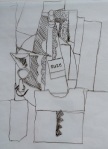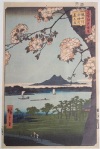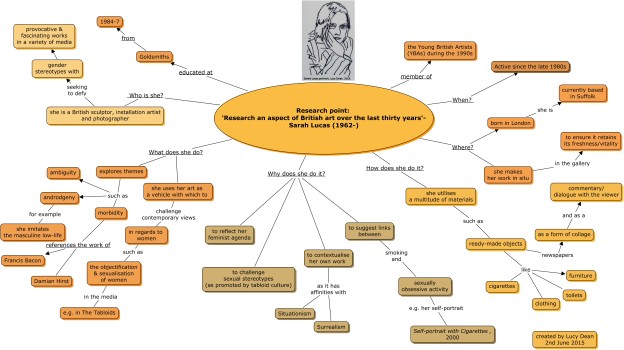A strengths, weaknesses, opportunities and threats (SWOT) analysis of my work to date:
- Strengths
- Research skills- can locate information from a variety of sources; verbal, aural, oral and text based
- Weaknesses
- The Internet- very distracting for subject specific research
- Opportunities
- Write up exhibition and gallery visits before the start of the next part of the course
- Threats- time management; I must not get carried away by a specific artist/art movement. I must try to remain focussed on what the tasks are asking for.
It seems to me that I have clearly demonstrated that I can retrieve information from a wide-variety of sources such as; books, journals, exhibitions and the Internet. As well as through communication with other individuals, such as curators and gallery/ museum staff. I have thoroughly enjoyed my visits to the Watts Gallery and the Pallant House Gallery. These visits have helped me to contextualise my work and bring the subjects to life.
I have sourced a multitude of reading materials to improve my knowledge and understanding and to improve my reading and writing skills. I have utilised the internet also, but I try to limit my use to accredited sources only as otherwise it can be difficult to verify the source of the information.
It has been enormous fun tailoring my visits to places which will enhance my studies and this has allowed me the opportunity to delve into areas which really interest me. Following a visit to Pallant House Gallery during this part of the course I have developed some ideas for the Critical Review in Part Five.
I have tried to analyse many different works of art and to evaluate them effectively. But I feel sometimes that I write too much and there is a tendency to go off on a tangent. So now I try to stick to the main points of the exercise. This is an area that I continue to observe closely.
In my opinion I believe that I have shown evidence of analysis and reflection throughout this section of the course. There hasn’t been enough time to write up all of my visits to galleries and all of the books that I have read, but I have completed every single Research Point and Exercise as well as all of the assignment requirements.
I think I can communicate my ideas effectively through my blog via the combination of imagery and text. If I need to show evidence of communication through spoken form then I can use Skype/ Google Hangouts in a discussion with my tutor.
In future I think there are opportunities to develop my critical thinking skills in relation to the history of art. Time management remains an issue but only because I have had much-needed breaks during this section of the course. I am aware also that I need to continue to improve my referencing skills and citations as this is an area I struggle with as I source information from a multitude of sources. During this part I have used information boards and leaflets and sometimes these aren’t properly accredited/ referenced. Where this is the case I have instead stated the corporate author rather than an individual.
I would like to have had more time in relation to the writing up of my visits to galleries and museums. I will try to do this at the start of the next part of the course as this has been highly beneficial and has provided the inspiration for future areas of interest.
I will continue to read monographs and essays about specific artists. The artists that I have most enjoyed learning about in this section were: Eva Hesse and Sarah Lucas. Both had very interesting stories to tell and their work was suitably impressive.
I have also enjoyed reading about the work of Portuguese artist Paula Rego as I love her etchings and paintings. Another artist whose life and work has inspired me is Frida Kahlo; a deeply fascinating individual due to her Mexican heritage. I will explore ways in which to include both their works in the next section of the course.




















